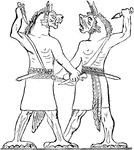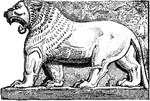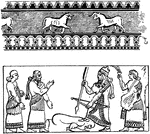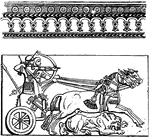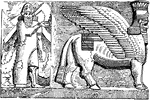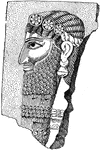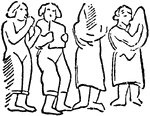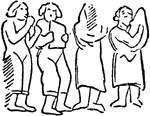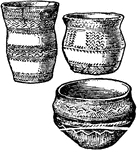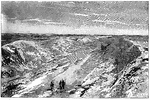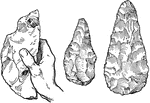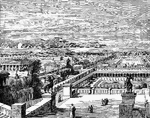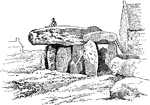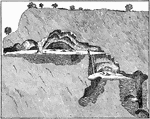
Rock Temple at Abu-Simbel
"The temple, built by Ramses II on the steep face of a cliff overlooking the Nile, has a facade containing…
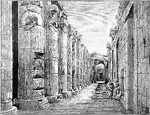
The Temple of Abydos
Built by Seti I and completed by his son Ramses II. The pillars in this temple contain carvings of very…
!["In order that [Alaric's] body might be saved from the gaze of the vulgar and the rage of his foes, he gave direction that it should be buried in the bed of the river Busentinus."—Ridpath, 1885](https://etc.usf.edu/clipart/78900/78952/78952_alaricburial_mth.gif)
The Burial of Alaric in the Bed of the Busentinus
"In order that [Alaric's] body might be saved from the gaze of the vulgar and the rage of his foes,…
!["The first noted public appearance of [Alcibiades] was on the occasion of the coming of the Lacedaemonian ambassadors requesting the surrender of Pylus. He at first violently opposed the petition, and even went so far as to urge the sending of an embassy to Argos to solicit that city to become a member in a new Athenian league. In spite of the earnest efforts of Nicias and of the protests of the Spartan ambassador, Alcibiades, by means of intrigue and bluster, succeeded in this work, and not only Argos, but also Elis and Mantinea, agreed to maintain an alliance with Athens for a hundred years."—Ridpath, 1885](https://etc.usf.edu/clipart/78900/78918/78918_alcibiades_mth.gif)
Alcibiades
"The first noted public appearance of [Alcibiades] was on the occasion of the coming of the Lacedaemonian…
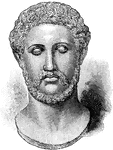
Alcibiades
A prominent Athenian statesman and member of the aristocratic family of the Alcmaeonidae.
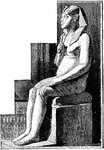
Statue of Amenophis IV
Also known as Akhenaten. Ruled as pharaoh of the Eighteenth Egyptian dynasty for 17 years.
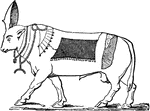
The Bull Apis
Also known as Hapis. In mythology, Apis was a commonly worshipped bull-deity in the Memphis region.

Aristophanes
A stature of Aristophanes, who was a prolific and commonly celebrated playwright of comedy. He is also…

Reindeer age articles, Arrow Straighteners
Arrow straighteners made from reindeer horns. Crafted during the Reindeer age.

Assyrian Princess in Full Dress
In ancient Assyria, princes, princesses, and priests vied with each other in luxury.

Assyrian Soldiers Fighting
A depiction of two soldiers fighting for Assyria, using bow and arrows against their enemies.
An Assyrian Statue
"The king, a rude heroic figure, stands upright before the god. He holds a club in the left hand, in…
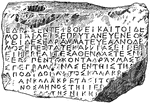
An Athenian Inscription
"A decree of the Council and Assembly dating from about 450 B.C."—Webster, 1913

Ancient Athens
"The mosted noted of the orations of Isocrates is the Panathenaicus or Panegyric of Athens, a work on…
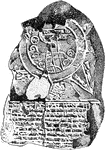
A Babylonian Map of the World
"A tablet of dark brown clay, much injured, dating from the 8th or 7th century B.C. The two large concentric…
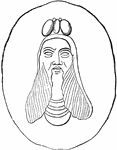
Image of Beelzebub, the Fly God
Literally means 'Lord of the Flies.' In Christian and Biblical texts, he is associated with a demon.
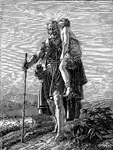
Blind Belsarius
Belsarius was ordered to have his eyes put out, and was reduced to a homeless beggar.
Reindeer age articles, Bone points and needles
Bone points and bone needles. Crafted during the Reindeer age.
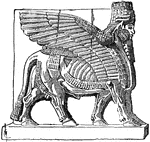
An Assyrian Winged Bull
Also known as a Lamassu. An ancient tutelary deity, often considered to be female.
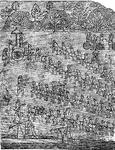
Winged Bull
An ancient Assyrian wall relief, depicting the symbol of a winged bull with the head of a human male.

Ionic Capital
The ionic capital is a design of a scroll rolled on both sides with spiral curves. It is found in Bassae,…

Ionic Capital
The ionic capital is a design of a scroll rolled on both sides with spiral curves. It was found in Pompeii.
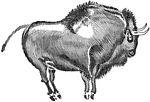
Reindeer Age Cave painting
A Reindeer age masterpiece painting in four colours of a buffalo. Painted in the Cave of Altamira in…
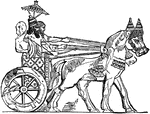
Assyrian War Chariot
"The stalwart character and aggressive bearing of the Assyrians were particularly shown in war. The…
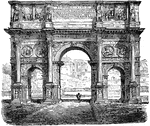
Arch of Constantine
The Arch of Constantine was erected to celebrate Constantine's victory of Maxentius at the Battle of…
!["Afterwards [Solon] went to Sardis and made the acquaintance of Cresus. It was on this occasion that the celebrated interview occurred which has been so much repeated for its lesson. Cresus, desiring to make an impression on his visitor, took him into his treasury and showed him his riches."—Ridpath, 1885](https://etc.usf.edu/clipart/78900/78916/78916_treasures_mth.gif)
Cresus Showing Solon His Treasures
"Afterwards [Solon] went to Sardis and made the acquaintance of Cresus. It was on this occasion that…
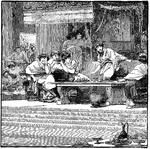
Banquet of Damocles
Image depicting a mythical moral anecdote, consisting of two morals. The first that regardless of who…
!["Here [Darius] was assassinated by Bessus, the satrap of Bactria. He was discovered by Alexander in a dying condition by the roadside. He asked for a cup of water, thanked the giver, and died. And with him died the Empire of the Persians."—Ridpath, 1885](https://etc.usf.edu/clipart/78900/78909/78909_dariusbody_mth.gif)
Alexander Discovers the Body of Darius
"Here [Darius] was assassinated by Bessus, the satrap of Bactria. He was discovered by Alexander in…
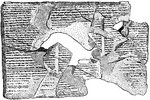
The Deluge Tablet
"Contains the narrative of the flood as pieced together and published by George Smith in 1872. There…
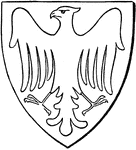
Eagle
The heraldic charge of the eagle is one of the earliest charges. It holds the same rank that the lion…




